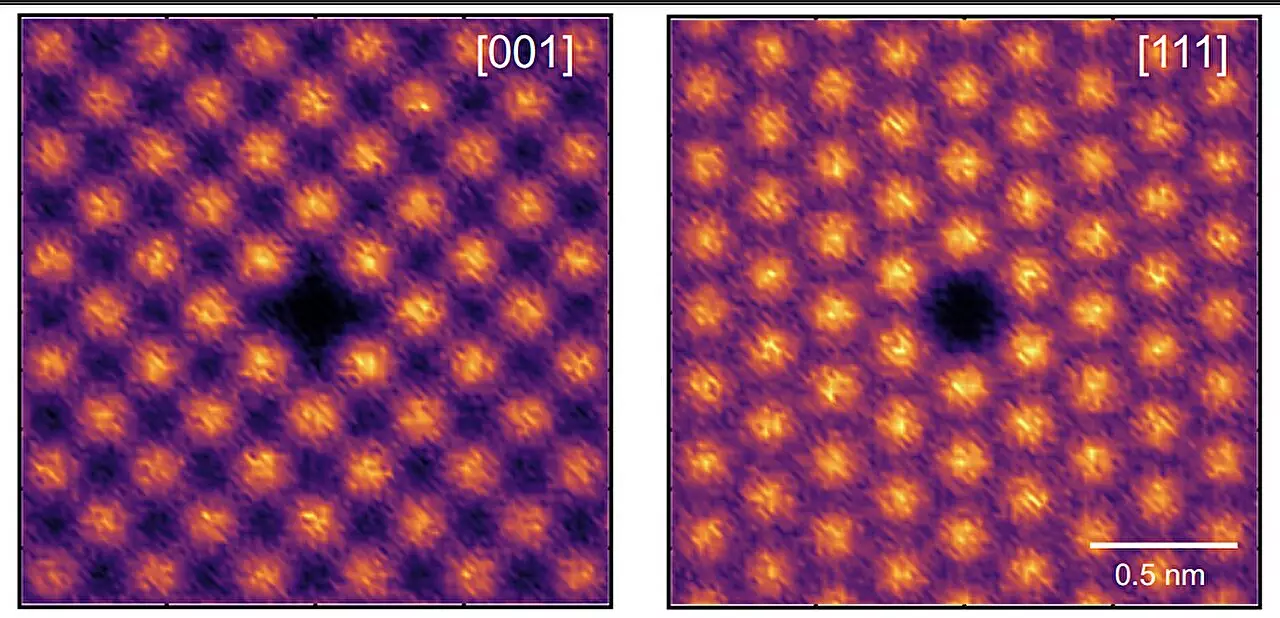In a remarkable stride toward advancing material science, researchers at the University of Sydney have unveiled a robust microscopy technique that allows a fascinating glimpse into the minuscule world of atomic relationships in crystalline materials. This innovative approach, leveraging atom probe tomography (APT), marks a significant leap in our comprehension of material behaviors and properties. As we delve into the implications of this breakthrough, it becomes evident that the capacity to measure tiny atomic-level changes will not only contribute to the creation of stronger and lighter alloys but could also revolutionize various industries, from aerospace to electronics.
The Essence of Short-Range Order (SRO)
At the heart of this breakthrough lies the concept of Short-Range Order (SRO), a crucial factor in determining the local atomic environments within materials. Historically, understanding SRO has been akin to solving a complex puzzle, as traditional microscopy techniques have struggled to capture the scale where these arrangements occur. However, the University of Sydney’s research team, spearheaded by Professor Simon Ringer, has pioneered methods to vividly visualize these atomic configurations. By probing the intricate neighborhood interactions at the atomic level, researchers can reconstruct a “material genome” that directly influences essential properties, from strength to conductivity.
SRO is intrinsically linked to how atoms are organized in a crystal structure, with variations in these arrangements leading to dramatic alterations in material properties. For instance, a specific atomic configuration can optimize the electronic behavior of semiconductors, while different arrangements could enhance the magnetic qualities of certain materials. This newfound ability to dissect and quantify SRO opens an avenue for custom-designed materials tailored for specific applications, which is paramount in fields demanding high-performance components.
Applications in Engineering and Beyond
The implications of this research extend well into advanced engineering fields. High entropy alloys (HEAs), which draw significant research attention due to their remarkable strength at elevated temperatures, serve as the primary focus. HEAs are poised to play a pivotal role in industries where thermal durability is a prerequisite, such as aircraft engines, nuclear reactors, and energy generation systems.
Professor Ringer emphasizes the global interest in HEAs, highlighting their potential for insulative properties against neutron irradiation in nuclear contexts. Such attributes reinforce the urgent need for a nuanced understanding of atomic arrangements—an understanding that this new technique promises to provide. By fine-tuning SRO in HEAs, researchers could unlock new properties that enhance their utility across various demanding settings, potentially transforming the landscape of materials engineering.
Innovative Visualization Techniques
The groundbreaking research integrates advanced data science methodologies with sophisticated imaging techniques provided by APT. By visualizing atoms in three dimensions, the team can evaluate SRO variations under different processing conditions. A prime example of this application can be seen in their examination of a specific cobalt-chromium-nickel alloy. The research reveals insightful correlations between varying heat treatments and SRO characteristics, offering templates for future investigations targeting the optimization of material properties.
This method marks a step forward, exceeding mere theoretical explorations. As Dr. Mengwei He, a postdoctoral fellow involved in the research, articulates, the ability to understand and measure SRO redefines how researchers craft materials. This foundational knowledge allows scientists to predict material behaviors more accurately and develop strategies for tailoring atomic architectures to achieve desired performance metrics. The understanding of how subtle atomic variations can lead to profound advancements in materials performance is an exciting prospect for engineers and scientists alike.
Revolutionizing Material Science through Simulation and Computational Modeling
One of the other significant advantages of this new microscopy method is its capacity to enhance predictive capabilities in materials science. The detailed atomic-scale blueprints generated from SRO measurement provide a solid foundation for computational models aimed at simulating and predicting future materials behavior. This revolutionary approach will undoubtedly refine methodologies employed to design innovative materials that meet the challenges of tomorrow’s technology demands.
Experts like Dr. Andrew Breen elucidate that this study not only pioneers experimental techniques for measuring SRO but also lays the groundwork for a comprehensive framework that organizes these findings. As researchers grapple with the complexities of multicomponent alloys, they now possess a tool that enhances their grasp on when and how measurements are valid, facilitating more reliable research outcomes.
A Catalyst for Progress in Materials Engineering
Considered a crucial breakthrough for the materials science community, this research showcases a dual accomplishment: definitive measurement of atomic structures and a profound understanding of the implications for materials engineering. This advancement is not simply a technical achievement; it heralds a new era of material design. The insights gained through SRO analysis empower scientists to fine-tune material properties, ensuring that the materials of the future are stronger, more efficient, and tailored for specific applications.
As the materials science frontier continues to evolve, the successful harnessing of APT to quantify atomic relationships is a game-changer, encouraging cross-disciplinary innovation and collaboration. With the potential for sustainable, cost-effective product development at the helm, we stand on the brink of a transformative chapter in engineering that promises to redefine what is possible.

